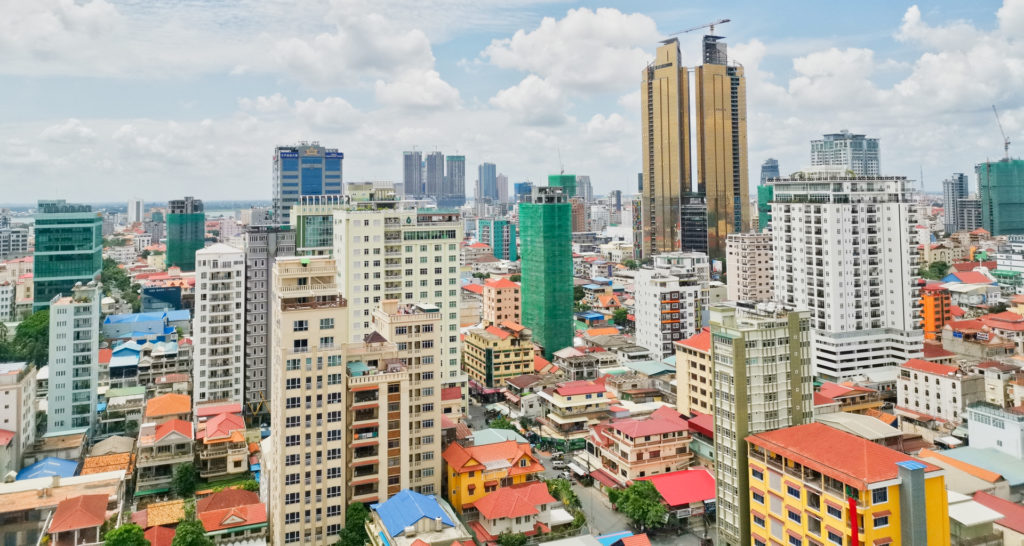Phnom Penh – the capital city of Cambodia
The capital city of Phnom Penh is a veritable cornucopia of opportunities for tourists to discover Cambodian culture. At the same time, the city also has a very interesting, if decidedly tragic, history, about which there is much to learn when visiting the city.

The skyline in Phnom Penh
Phnom Penh has about 1.5 million inhabitants and is located in the southern part of Cambodia. The name of the city comes from “Wat Phnom Daun Penh”, which means “the hill temple of the old woman Penh”, which actually exists and dates back to the 14th century. Architecturally, there is a lot to discover in Phnom Penh: There is a historically grown wild mixture of buildings from the late Khmer Empire, French colonial style (from the time of the French colonial administration around the turn of the century) and the so-called “New Khmer Architecture”, which developed after the end of the occupation. Due to the eventful history of the city, many of these buildings are now threatened with demolition, but due to tourism and the general economic boom of the country, the breeze of modernity is definitely blowing through the big city, for example through a very global-looking skyline.
Phnom Penh’s tragic history can be traced well from about the time Cambodia gained political independence in 1953. At that time, the resident groups were well mixed between Chinese, Khmer and Vietnamese. During the Vietnam War in the 1970s, many peasant families fled to the city to escape bombardment, bringing the city’s population to 2 million before the Khmer Rouge came to power in 1975.
This changed abruptly with the onset of the Khmer Rouge regime. The Khmer Rouge wanted to create a self-sufficient peasant state; to them, anything urban was a sign of capitalism and counterrevolution. For this reason, the city was almost completely cleared of people: about 2 million people were deported from the city on foot and from then on had to do forced agricultural labor in the countryside. One third of the entire population of Cambodia lost their lives during this genocide: both by executions and by hunger, the hard work and diseases. This genocide is the saddest chapter in Cambodia’s recent history, and it is especially important for visitors to Phnom Penh to understand this period, as it had such a significant impact on the city itself and especially its inhabitants.
With the invasion of the Vietnamese army, life slowly returned to the almost deserted city of Phnom Penh. Since Cambodia was put under the supervision of the UN in 1992/1993, the city experienced an economic upswing, so that it was able to develop into a modern metropolis in the last thirty years, which is also a popular destination for tourists and is definitely worth a visit.